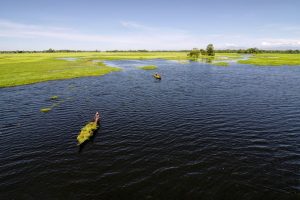Aquaculture Development in Meghalaya: A Critical Evaluation of MSAM in West Khasi Hills
By Renuka Paul
With rich resources in terms of water and fish species, aquaculture is identified as a priority sector in the Indian state- Meghalaya. To fast track development and create self sufficiency, the state adopted a mission mode approach, launching Meghalaya State Aquaculture Mission (MSAM) in 2012. Owing to the progress achieved in terms of fish production, income generation and employment creation, MSAM 2.0 was introduced. The study aimed at assessing the performance of each of the 5 mini missions under MSAM2.0 in West Khasi Hills, the largest district of Meghalaya. Based on data, collected from various published and unpublished sources, and inputs from district officials and beneficiaries of various schemes, the overall status of aquaculture in the district was explored. It was observed that while the mission factored in measures for economic and environmental protection, MSAM 2.0 did not offer any mechanisms for social protection. Therefore, a re-evaluation of the strategies, to introduce human centric approach seems necessary to ensure an equitable development in the fisheries sector.
